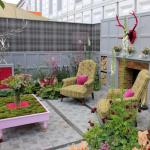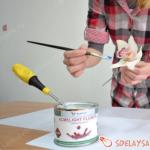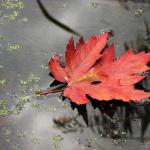Yucca - home care
May 14 2018
Yucca - home care
Houseplant with the name Yucca (Yucca) is very popular with flower growers. This evergreen beautiful flower looks noble both in a city apartment and in a solid office, it is not a shame to present it as a gift. An adult plant evokes enthusiastic looks and a desire to have such a flower at home. If you have this exotic, or you are thinking about acquiring it, our article will help you with advice on how best to care for this southern beauty. We’ll make a reservation right away that you don’t need special knowledge and special requirements for the comfortable maintenance and care of Yucca at home.
Yucca is a native of Central America, its arid regions. Visually, it looks like a Palm tree, especially in its natural habitat, when the leaves from the lower tiers dry up and fall off, the trunk becomes woody and only a bunch of hard leaves remains at the top. But this is not Palma.
There is some confusion about the classification of Yucca. At first, Yucca was attributed to the Liliaceae family, then to the Agave family, and now to the Asparagus family. Moreover, Yucca is now simultaneously on the list of representatives of both. In general, the confusion is complete. In addition to the Palm, it is also often confused with other, similar to the Palm, indoor flowers - Dracaena and Cordilina. An experienced florist will not be mistaken, he will immediately see the difference. But for beginners, this similarity is a little confusing.

Large copy of Yucca
In nature, Yucca grows as a fully or partially leafy large shrub from two to eight meters tall. Indoor species grow up to a meter or two. Its tree-like stem is crowned with green or bluish dense leaves sticking out in different directions or slightly drooping, pointed lanceolate or sword-shaped. The length of such a leaf can reach up to a meter, although indoor specimens have leaves no more than 50 cm in length. There are stemless species of Yucca, the crown of which consists of one or more rosettes.

Yucca blooms amazingly beautiful, throwing out powerful vertical peduncles, abundantly strewn with buds. Large flowers, up to 8 cm long, resemble cup-shaped bells. The flowers are most often white, but in nature there are creamy greenish, yellowish or pinkish tones. The fruits are of no interest, they look like dry boxes. True, some species have juicy edible fruits. But unfortunately, at home, not every grower falls to see the flowering of Yucca. It grows pretty fast. From a small plant in a few years it can turn into a large bush or tree. What should be done to make the plant feel "at home" and at the same time maintain its compact decorative shape and dimensions acceptable for your room? Let's try to figure this out.
Species and varieties
There are over thirty different types of Yucca. They differ mainly in leaves and size. In some species, the leaves are lanceolate, while in others - in the form of a sword. In addition, the edges of the leaf plates in some species are covered with long stiff hairs, in others - with thorns, and in others they are smooth. In indoor varieties of Yucca, in addition to ordinary green leaves, there are variegated leaves with bright white or yellow stripes. The most popular species are: filamentous, ivory, gray-gray, glorious and aloe-leaved.
At home, mainly two types are grown - elephant and aloe. Less often - filamentous and gray. We are sure that all types of this plant will decorate your home. Let's get to know them better.
Yucca Elephant (Yucca elephantipes)

It is named so because of the wide massive base of the stem, which appears in Yucca in old age, which resembles the foot of an African elephant. This type of Yucca is very unpretentious to the conditions of existence. Grows slowly. It is accustomed to the arid climate of a city apartment, undemanding to the soil composition and does not take up much space indoors. In addition, other indoor flowers that are resistant to dry soil can be planted in a wide pot with Yucca, for example, or. Against the background of Yucca, pots with, Spathiphyllum, Benjamin's ficuses look great. or also decorate this floral composition.

In the south of Russia, in the Crimea and the Caucasus, it grows in open ground and does not require shelter for the winter. In central Russia, it is grown with shelter. Sometimes grown at home. This almost stemless plant grows as a shrub with beautiful bluish-green leaves, which have characteristic white or yellow stripes. The length of the leaves reaches 70 cm, the width is up to 4 cm. The tip is pointed. The edges of the leaves are slightly lowered, they have numerous twisted white threads. The root system is well developed. The peduncle is very large, rising above the rosette to a height of up to one meter. Yucca blooms with drooping yellowish-white flowers up to 8 cm in length.

This species is less common in indoor floriculture. It is more demanding on the content, takes up more space. It grows slowly, but over time, growing, an adult plant takes the form of a ball with wide leathery leaves. In the summer, Yucca Marginata blooms. On the inflorescence, up to 45 cm long, many bell-shaped flowers of creamy white color with a light purple tint are formed.
Yucca gray (Yucca glauca)

This species of Yucca has a strongly shortened stem. In height does not grow above two meters. The bluish-green leaves are collected in dense rosettes about 90 cm wide. They are leathery, fibrous, up to 60 cm in length. At the edges they are white or gray with flaking fibers. In summer, it forms a paniculate inflorescence up to one meter in height, on which many small creamy-white flowers with a greenish or brown tint appear.
Yucca care at home
The presented types of Yucca will perfectly fit into the interior of your apartment, plant it with greenery, and will not require big sacrifices and time from you. Just follow the basic rules for growing it, which we will now introduce you to.
Lighting and pot location

Light-loving Yuccas are best placed on flower stands near the eastern or western window sills in the apartment. The place should be sunny, well lit throughout the daylight hours - the growth, development and appearance of your flower will depend on this. For this reason, you should not put the pot on the floor - the light will not be enough. It is necessary that the stand for it be flush with the windowsill.
If you put a flower pot near the southern windows, then at noon you will have to shelter Yucca from the direct rays of the sun with light curtains or blinds so that its leaves do not get sunburn.

If the window sills in your apartment are wide, and the Yucca bushes are still young, then you may well keep them on the windowsill. Just make sure that in the summer the sun does not burn them, and in the winter - the leaves do not touch the cold glass.
In winter, the plant will lack natural light from any window. You will have to take care of this in advance and purchase a fluorescent lamp or a phytolamp to turn it on if necessary at a distance of 50–60 cm from the flower in order to artificially extend daylight hours for Yucca up to 12 hours a day.

Airing the room in autumn and winter is also necessary for a flower, but do not forget that drafts are contraindicated for it.
Temperature
The temperature of the flower content should be kept around 22-26 gr. The usual temperature of city apartments is quite suitable for him, in which the flower develops well and has a healthy appearance. In winter, it is desirable to lower the temperature to 16-20 gr. During the heating season, Yucca begins to suffer from hot air. Its leaves begin to stretch, thin out, the turgor weakens. Try to reduce the temperature in the room by airing or using split systems. Close the batteries with improvised means. Avoid sudden temperature changes.
Sometimes, the owner opens windows for ventilation in winter and forgets to take Yucca into the next room. A short time is enough to ruin a plant and then regret it for a long time. The lower temperature limit in winter for room Yucca is 8 gr. heat.
Humidity
Yucca does not require high ambient humidity. It suits the humidity of our city apartments - 40-50%. If the humidity is even lower and the temperature is high, for example, during the heating season, we recommend spraying the surrounding air and flower leaves with boiled or well-settled water at room temperature. Just make sure that the sun's rays do not get on the wet leaves of the flower through the window panes - the plant can get burned and lose its decorative appearance.
To keep the leaves clean and improve their breathing in the hot season, the crown should be wiped with a damp cloth. A flower with wet leaves should not be placed in the sun - it will get burned. Therefore, it is advisable to carry out this procedure in the evening, so that the crown dries overnight.
Watering

There is no single rule for watering Yucca. The amount and frequency of watering depends on the season, indoor or outdoor humidity (depending on where the flower is), the size of the flower and its pot. For example, a young plant just bought from a store and transplanted into a new pot should be moistened a little almost every day, and an adult flower growing in a huge pot can be watered once every two to three weeks. We will give general recommendations on this matter.
In summer, watering should be plentiful, but not frequent. Wait until the top layer of soil dries out 4-7 cm deep, only then water again. Use only settled or boiled water at room temperature. If the air temperature is about 20–22 degrees, water no more than once a week. In autumn and winter, watering is reduced. One watering in 10-14 days is enough. The cooler the air in the room becomes, the less often the flower should be watered. If the temperature has stopped at around 18 degrees for a long time, one watering every 3 weeks is enough.
It is noticed that it is enough to pour 1 liter of water into a 5 liter pot. Yucca tolerates overdried soil more easily than its overflow. At any time of the year, do not allow excess water to stagnate in the pan so as not to provoke rotting of the Yucca root system. If brown spots appeared on the leaves and they began to curl up, it means that the roots began to rot from waterlogging of the substrate. In addition, waterlogged soil often causes damage to the plant by all sorts of pests.

If the top layer of the substrate remains damp for several days after watering, it is possible that the substrate has become very hard and does not allow water to pass to the roots inside the pot. In this case, you need to urgently loosen the soil with some improvised tool, in extreme cases with a fork.
Or perhaps the level of humidity in your apartment has increased a lot. The soil began to dry out more slowly. By maintaining the usual watering regimen, you risk ruining the plant's root system.
In hot weather, it is advisable to arrange a shower for Yucca. Rinse its leaves well from dust, but make sure that water does not fall on the substrate (cover the soil with polyethylene while bathing). After a shower, place the pot in a place where there are no drafts and direct sunlight. When the leaves dry, you can take the flower to its place.
fertilizers

Feeding Yucca is a necessary condition for its successful cultivation from April to August. The advantage is foliar top dressing with mineral liquid formulations. Only dilute them with twice as much water as indicated in the instructions for the drug. Spray the undersides of the leaves with the product - Yucca responds well to this. Foliar top dressing is combined with the next watering of the flower. Purchase liquid mineral fertilizers for flowering indoor flowers in specialty stores. During the period of active growth, Yucca is fed once every 2 weeks. During illness, after transplantation and in autumn and winter, the flower is not fed.
If, at the time of plant transplantation, you used a special balanced soil for Palms or Dracaena, then Yucca will have enough nutrition for a long time, and you will not have to feed it until the next season.
The soil

Yucca prefers light, loose, but sufficiently nutritious substrates, in which leafy, soddy soil, peat, humus and coarse sand are in equal proportions. You can use ready-made soil mixtures. The composition is suitable soil for Palms or Dracaena with a neutral or slightly acidic environment. And you can prepare the soil yourself. In any case, we recommend disinfecting the substrate in any way before use - calcining or freezing to exclude the presence of infection and insects.
Transfer

After acquiring Yucca, do not immediately put it in the prepared place - give it some time to acclimatize to new living conditions away from other flowers. Transplant the flower into a new pot larger than the shipping container. Substrate also prepare a new one. Be sure to lay a good layer of drainage on the bottom of the pot - expanded clay or crushed stone, at least 5 cm. Transplant the flower using the transshipment method. Do not deepen the stem too much. Diving to a depth greater than 3 cm is fraught with rotting of the trunk and death of Yucca. After transplanting, water the plant and stand separately from others for a couple of weeks to observe it. Do not put the pot in the sun, in a draft, in a too hot room. After the expiration of the term, a healthy-looking Yucca can be rearranged to the planned place.

A planned transplant of Yucca into another, larger pot is carried out for young specimens once a year, for more mature ones - once every two to four years with partial replacement of the old soil with a new one. There are no special restrictions on the time of transplantation, but it is still better to transplant it in the spring. The reason for the transplant may be the root system of Yucca that has grown throughout the pot. When removing a flower from an old one and placing it in a new pot, try not to damage the root system. Otherwise, the flower may get sick, the adaptation process will drag on for a long time, if not worse.
Try to ensure that the new substrate with which you fill the voids in the pot is of the same composition as the previous one, then the adaptation time will pass faster. Another condition: within a month, the transplanted flower cannot be fed, cut or cut! Let him adapt to the new living conditions alone.
A large flower is not very stable. Therefore, it is planted in a large pot. To prevent acidification of the soil, rippers are added to it - vermiculite, perlite or expanded clay chips in a ratio of 5 to 1.
If the plant is too large and you do not want it to grow further, use an old pot when transplanting, and cut the root system of the flower by a quarter with a clean tool. Treat the cut points with crushed coal, it can be woody, it can be activated. In an old, but cleaned and disinfected pot, new drainage and part of the new soil are poured into 5 cm. The flower is set and its roots are covered with a substrate. Fresh soil should be both on top and on the sides of the pot. After transplanting, do not water Yucca for a couple of days, and then begin to gently moisten the substrate in portions, waiting for its surface to dry.
An adult plant that has reached a monumental size is problematic to transplant. Usually content with an annual replacement of the old soil from the top of the pot with new soil.
How to prune yucca

rest period
Yucca does not have a pronounced period of rest. She needs good lighting all year round, moderate ambient temperature, and moderate watering. If you take it out for the winter in an unheated room, keep in mind that the temperature is below 8 degrees. heat is critical for her.
Conclusion
We introduced you to different types of evergreen beauty Yucca, as well as the rules for caring for her at home. According to Feng Shui, Yucca is a symbol of fresh air, purity and perfection. She does not tolerate disorder either in the house, or in the office, or in her head. It is placed near the workplace of a person who often conducts business negotiations and signs important papers. We are sure that you will like this flower.
This post has no tags




